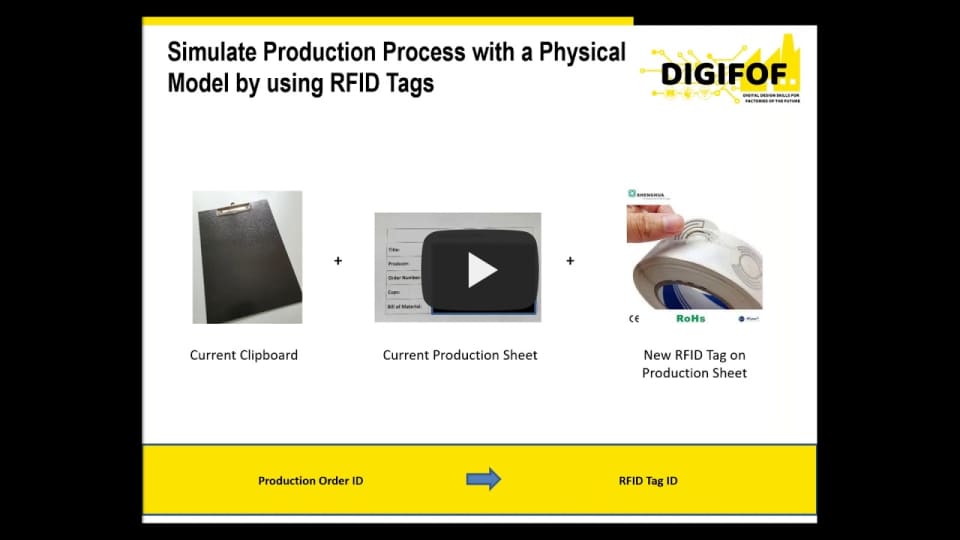BOC Group
Robert Woitsch
Type: Software-Package: Open-Source version for process modelling, simulation and monitoring
TRL: 6
The digitizing of a production process is a set of tools and approaches that enables:
-
The modelling of the production process using standardised process model notation (BPMN) and complementary modelling objects to provide a holistic representation of the digitized process.
-
The integration of process log data – provided by legacy systems – and process models in order to represent the current status of the production process.
-
The analysis, simulation and visualisation of the current production process status to support decision making or to automatically trigger decisions.
The digitisation of a production process requires several parts from which the following are considered as pre-conditions:
- Digital Sensors, Edge-Infrastructure, Networking and process logs – e.g. in a time series database are considered as legacy systems.
The provision of a digital twin consists of
-
Production Process Model is performed via
-
Process model notation to describe the sequence of actions
-
Key Performance Indicators (KPI) describing the plan vs. actual status of the process
-
IT- governance and deployment model describing the relevant parts of the IT and Edge infrastructure for the digitization of the process
-
-
Production Process Status is generated via the configuration of aforementioned Key Performance Indicators that are linked to interfaces that access the legacy log files – e.g. in form of a query accessing the time series database or in form of registering to events on a message bus.
-
Decision Support is provided via Analysis, Simulation and Visualization Algorithms in form of a set of services that operate on top of aforementioned model and process status data. Additional external services – e.g. for process mining – may be integrated via interfaces.
Simulation complements the monitoring of the production process by providing a model-based approach to configure both, (a) the monitoring that is based on model-based Production Process KPIs as well as (b) the simulation that is based on weighted multiple parameters to calculate probabilities.
Based on BPMN 2.0: the business process modelling and notation standard is provided.
-
Complementing data-driven or mining approaches can be integrated into the smart and flexible Process Dashboard.
-
Collaboration features enable learning cycles and co-creation.
The smart and flexible process dashboard can be integrated into legacy collaboration systms like e.g. MS Teams or Confluence.
IPR / Licence
Open-Source
-
Olive: The Olive Microservice Framework allows to develop a system composed of different (web-)services. Those services run in own processes and communicate by using standard protocols resulting in technological independence requiring only HTTP and JSON. The Microservice Framework builds the foundation for the development of web dashboards for monitoring selected KPIs related to specific production processes.
-
ADOxx.org: The metamodeling platform ADOxx provides the capabilities to create process models with BPMN and related KPI models. Those models can serve on the one hand as an input for the simulation and on the other hand provide the foundation for monitoring production processes.
Contact Person
Information
-
Change2Twin Deliverable D3.2
-
Slides:
- Documentation:
- Webinar: Simulating event logs in production processes
Use
-
ADONIS CE – BPM for Digital Twin: https://www.adonis-community.com/en/
-
Package Download: https://adoxx.org/live/web/change2twin/downloads
Extend
-
ADOxx: https://www.adoxx.org
-
Open-source Docker Container Simulation: https://git.boc-group.eu/adoxx/knowledge-based-model-simulation-docker
-
Open-source KB Simulation Package: https://git.boc-group.eu/adoxx/knowledge-based-model-simulation
-
Physical Experiment of Painting Process within the EU project Change2Twin: https://git.boc-group.eu/change2twin/graphenstone-virtual-lab/-/raw/master/DOC/OMiLAB%20Laboratory%20Experiment%20for%20Production%20Processes_03032021.pdf

